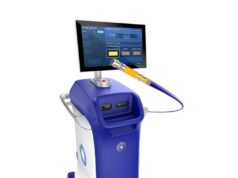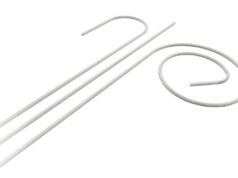
By Elizabeth Saarel
Despite a dearth of research, published guidelines in the United States and Europe-based on expert opinion -recommend against competitive sports participation in activities more strenuous than bowling or golf (Class IA) for patients with pacemakers or implantable cardioverter defibrillators (ICDs).1,2
In 2006, a prospective multicentre registry was launched to study the safety of sports participation for patients with ICDs. This international investigation includes patients with ages from 10 to 60 years who received ICDs for primary or secondary prevention of sudden cardiac death. Diagnoses include inherited arrhythmia syndromes, inherited or acquired cardiomyopathies, congenital heart disease, and valvular heart disease. The first published results from this registry indicate that athletes with ICDs can engage in vigorous and competitive sports without physical injury or failure to terminate the arrhythmia despite the occurrence of both inappropriate and appropriate shocks.3
Data from a prospective registry in our paediatric and adult congenital heart centre includes 21 young patients with ICDs who regularly participate in competitive or vigorous sports (great than IA for dynamic and/or static component). Our data show no mortality and no increase in morbidity after four years.4 Patients’ choice of athletics include running, jogging, alpine hiking, swimming, skiing, snowboarding, rock climbing, basketball, football, baseball, gymnastics and other sports. One teen with congenital heart disease experienced two appropriate ICD shocks for treatment of ventricular tachyarrhythmias during basketball and then decided to withdraw from competitive athletics. No other patients have had an increased incidence of ICD therapies during athletics, either inappropriate or appropriate. We have seen no increased rate of damage to the ICD system during organised sports. Of note, most of our patients with ICDs are on beta blocker therapy to prevent inappropriate ICD shocks due to sinus or supraventricular tachycardias, and most underwent formal exercise testing to screen for arrhythmia prior to sports participation.
When questions arise about sports participation it is our practice to counsel patients and families about the risks, including potential for increased rate of ventricular tachyarrhythmias and damage to the pacemaker or ICD system. Counselling is patient specific; the underlying cardiac disease, type of device, indication for implant, position of leads and pulse generators, underlying heart rhythm, patient age, and type of athletic activity are considered when estimating risk.
The potential benefits of sports participation for young patients include decreased risk for obesity, metabolic syndrome, coronary and peripheral artery disease, stroke and diabetes.
There are additional benefits of exercise including a positive effect on general mental health, decreasing risk for depression and overall improvement in wellbeing, all of which affect quality of life. Ultimately, the importance of sports participation to each patient’s quality of life must be estimated by the individual and their family.
In summary, the risk of sports participation for our patients with implanted cardiac devices may include an increased tachyarrhythmia burden, injury after loss of consciousness from cardiac device function or malfunction, and permanent damage to the implanted device system during sports. Sports that evoke a high potential for serious injury to self or others if a patient were to experience syncope, including those using motor vehicles, should be discouraged. In the future, our estimates of risk should be guided by research rather than opinion. The risks of sports participation must be weighed against the benefits, including potential for improved quality of life, for all young patients with implanted cardiac devices.
References
1. Zipes D P et al, J Am Coll Cardiol 2006; 48(5): e247-346
2. Pelliccia A, Eur Heart J 2009; 30(24): 2967-8
3. Lampert R et al, Circulation 2013; 127(20): 2021-30
4. Saarel E V et al, J Am Coll Cardiol 2014; 63(12): a128
Elizabeth Saarel is with the University of Utah, Salt Lake City, USA









